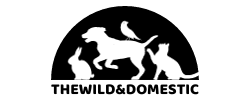
[ad_1]
Wild horses once roamed freely, symbols of the American frontier spirit. However, today, these iconic creatures face a grim future as they are corralled in facilities often labeled as “kill pens.”
The situation has ignited a heated debate between advocates for wild horses’ rights and those who argue that population control is essential to protect public lands and the livelihoods of cattle ranchers.
At the heart of this controversy lies the Bureau of Land Management’s (BLM) Wild Horse and Burro Adoption Program.
Wild horses and burros, protected under the 1971 Wild Free Roaming Horses and Burros Act, have historically enjoyed the right to live on public lands, referred to as the “range.”
However, the BLM contends that their numbers have surged, necessitating costly interventions that impact the environment, wildlife, and cattle ranchers.
To address the overpopulation issue, the BLM runs an adoption program that allows private individuals to take ownership of wild horses and burros. The program even offers a financial incentive, paying adopters $1,000 to care for these animals for a year. Once the adoption is complete, the animals become private property, no longer protected by the 1971 law. This transition raises concerns about the horses’ fate and their potential journey to slaughterhouses.
Advocates argue that the BLM is indirectly steering wild horses toward slaughter. Some adopters, they claim, are profiting from the incentive money and then selling the horses at auctions frequented by slaughterhouse brokers. Although the practice may seem morally questionable, it is not illegal as long as the adopter has obtained the ownership title to the horse.
The difficulty in tracking branded horses’ fate makes the situation even more complex. Once an animal becomes privately owned, the BLM stops monitoring its status. Advocacy organizations like the American Wild Horse Campaign allege that many branded horses are ending up in kill pens across the country, making it impossible to gauge the scale of the problem accurately.
The BLM maintains that the adoption program is essential due to the overpopulation of wild horses and burros, which costs taxpayers millions of dollars and poses challenges to cattle ranchers. The agency acknowledges the need for changes to strengthen protections for adopted animals and claims to be working with advocates and interested parties on potential revisions.
As the debate continues, potential solutions are being considered. Some suggest using contraceptives to control wild horse populations, a method supported by certain advocacy groups as long as it is safe and humane. The BLM has already begun applying fertility control to the animals.
Sign this petition to save wild horses!
What you can do
Support ‘Fighting for Wildlife’ by donating as little as $1 – It only takes a minute. Thank you.
Fighting for Wildlife supports approved wildlife conservation organizations, which spend at least 80 percent of the money they raise on actual fieldwork, rather than administration and fundraising. When making a donation you can designate for which type of initiative it should be used – wildlife, oceans, forests or climate.
This article by Trinity Sparke was first published by One Green Planet on 1 October 2023. Image Credit :Callipso88/Shutterstock.
[ad_2]
Source link


Leave a Reply